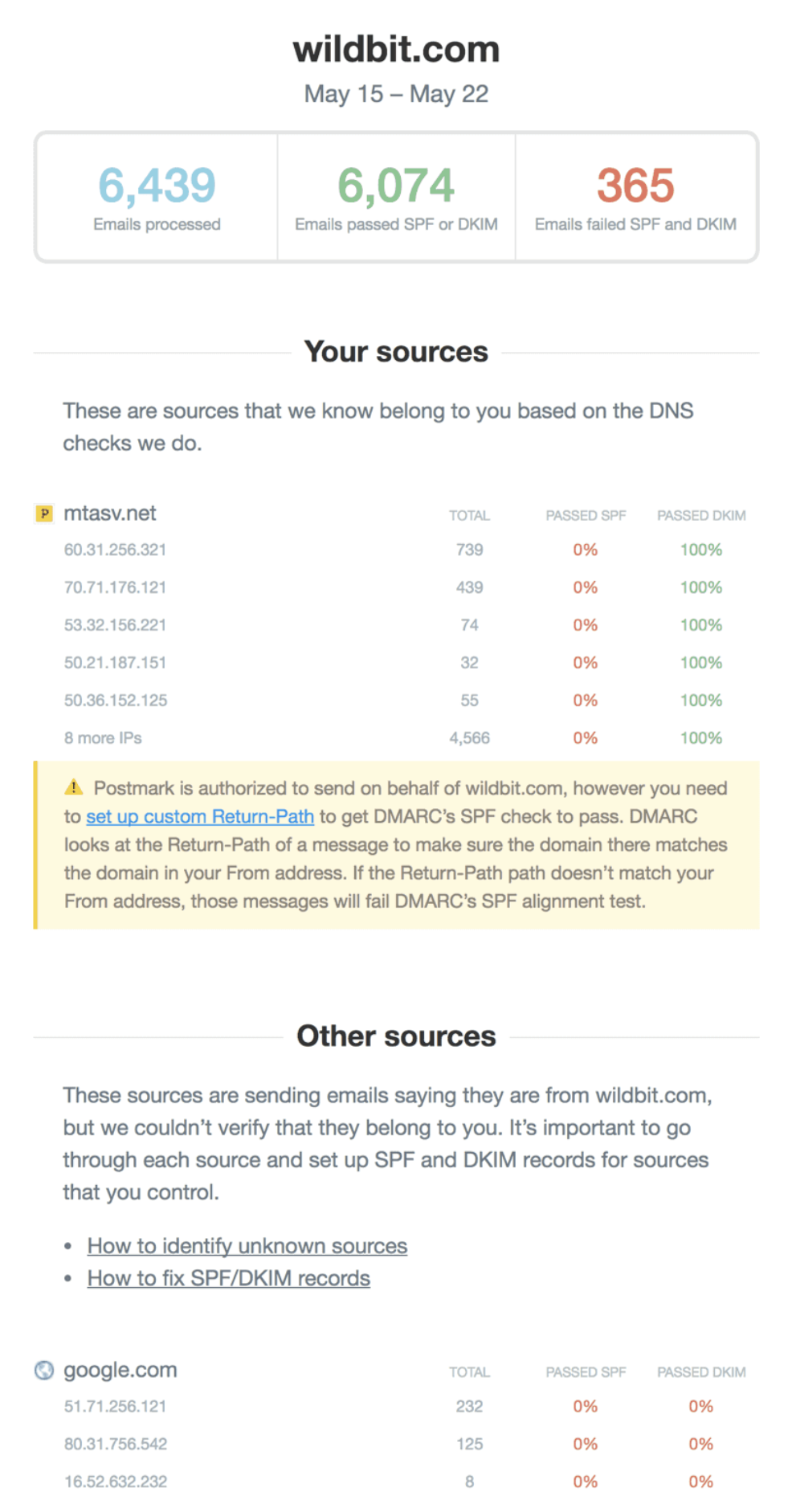Suitability
Free DMARC Weekly Digests by Postmark is best suited for small businesses (SMBs) or individuals managing personal domains who need a basic understanding of their DMARC compliance without additional cost or complexity. It's an excellent entry point for learning about DMARC, monitoring early compliance, and receiving simple, email-based recommendations.
It is less suitable for enterprise-level organizations, MSPs (managed service providers), or those with complex email ecosystems requiring real-time monitoring, advanced analytics, multi-user access, or active policy enforcement. Its lack of a web dashboard and limited reporting history mean it doesn't scale for comprehensive DMARC management.
GoDMARC caters to a broader audience, from SMBs with growing DMARC needs to large enterprises and MSPs requiring robust and scalable solutions. Its free tier offers a strong starting point for smaller entities, allowing them to protect up to two active domains with a significant volume of RUA reports.
For enterprise clients and MSPs, GoDMARC's paid plans deliver multi-tenancy, advanced reporting, API access, and dedicated support, making it highly suitable for managing multiple domains and complex DMARC implementations. It’s ideal for organizations that prioritize comprehensive security, detailed insights, and proactive management of their email sender reputation and compliance.











































 4.6 / 5(28)
4.6 / 5(28)
 4.9 / 5(13)
4.9 / 5(13)



